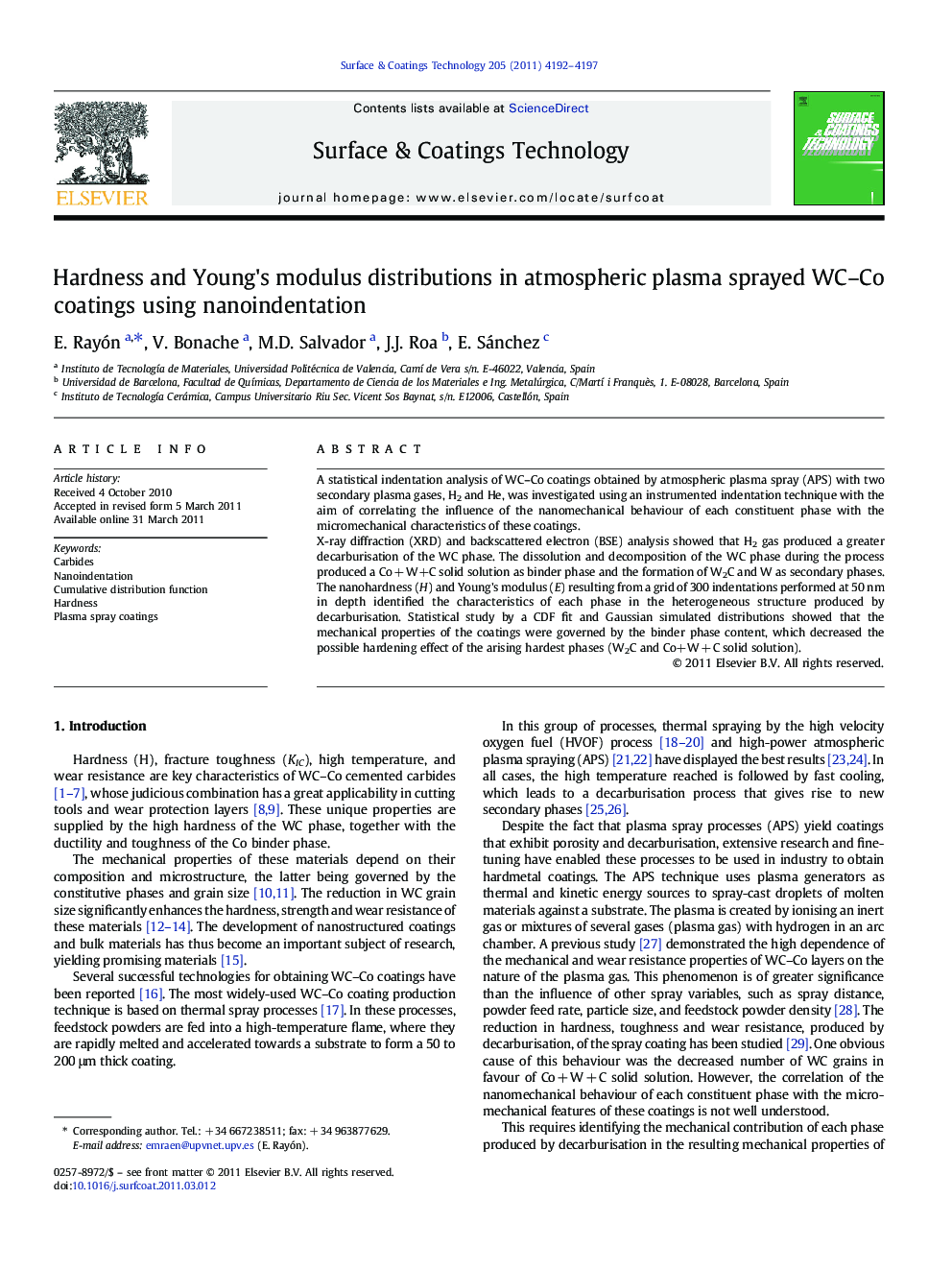| Article ID | Journal | Published Year | Pages | File Type |
|---|---|---|---|---|
| 1659258 | Surface and Coatings Technology | 2011 | 6 Pages |
A statistical indentation analysis of WC–Co coatings obtained by atmospheric plasma spray (APS) with two secondary plasma gases, H2 and He, was investigated using an instrumented indentation technique with the aim of correlating the influence of the nanomechanical behaviour of each constituent phase with the micromechanical characteristics of these coatings.X-ray diffraction (XRD) and backscattered electron (BSE) analysis showed that H2 gas produced a greater decarburisation of the WC phase. The dissolution and decomposition of the WC phase during the process produced a Co + W+C solid solution as binder phase and the formation of W2C and W as secondary phases. The nanohardness (H) and Young's modulus (E) resulting from a grid of 300 indentations performed at 50 nm in depth identified the characteristics of each phase in the heterogeneous structure produced by decarburisation. Statistical study by a CDF fit and Gaussian simulated distributions showed that the mechanical properties of the coatings were governed by the binder phase content, which decreased the possible hardening effect of the arising hardest phases (W2C and Co+W + C solid solution).
Research highlights► The mechanical properties of WC–12Co coatings were analyzed by nanoindentation. ► The nanohardness and Young's modulus were identified for each phase. ► Statistical analysis correlated macroscopic with nanomechanical behavior. ► The binder phase reduces the hardening effect due to decarburisation process.
